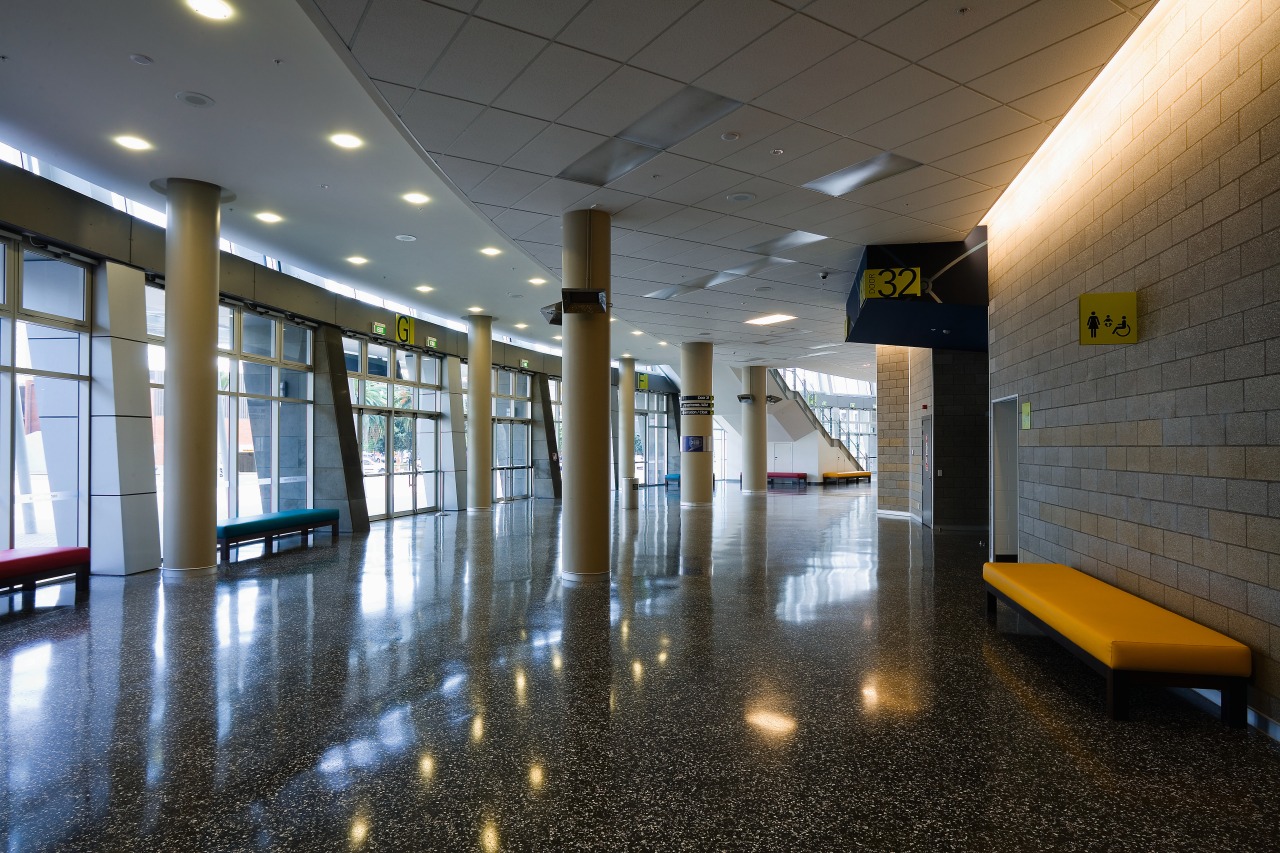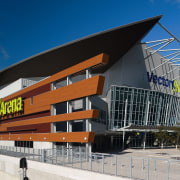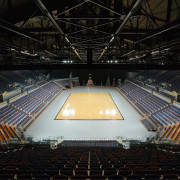Raising the flag
The completion of the Vector Arena project was a turning point for Auckland's Britomart precinct development. It was also a major achievement for Mainzeal the main contractor on the project
In most major cities with a harbour, there is an iconic public building on the waterfront. It may have taken a while for Auckland to follow suit, but with the opening of Vector Arena, the city now has a flagship entertainment venue in a prime waterfront location.
Funded and developed by the Auckland City Council in conjunction with Quay Park Arena Management (QPAM), the multi-purpose indoor arena provided challenges for the main contractor Mainzeal, and there was no missing the media attention it attracted.
Cameron Dorward, Mainzeal project manager, who was the site manager for the Vector Arena project, says there were also some highly positive outcomes.
"Not the least of these is the fact that Auckland City now has a world-class events centre, which will assist in attracting international events that would not have been held in the city previously," he says.
Dorward says Mainzeal learned many lessons through the project that will be invaluable for future work.
"It also demonstrated that once we commit to a project, we deliver," he says. "Mainzeal is consequently a better and stronger company having undertaken the Vector Arena project."
Dorward says the project design was fast tracked, with construction hot on the heels of design.
"The sheer size of the building was a demanding factor. At the outer roof edge, the building is 125m long x 101m wide, with the arena floor measuring 80m x 40m. The minimum height to steelwork over the arena floor is 18m. Dorward says this factor alone dictated innovative scaffolding solutions, and elevated work platforms. Specialist access equipment was hired from Australia, and other new equipment bought by Mainzeal.
"To overcome the enormity of the project, Mainzeal's largest tower crane, the Liebherr 550, was erected on a travelling base, with a 70m running track. This allowed the 20-tonne pre-cast raking beams to be carried from one side of the site to the other."
Dorward says that at one stage the largest tower crane and the five largest elevated work platforms in the country were all on site at the Vector Arena.
The design of the main roof provided a test. With falls in both the east-west and north-south directions, the geometry of the side leaves was geometrically complicated to construct.
"They are both flat planes at odd angles, and they both have a curved edge in the horizontal plane, which added to the complexity," says Dorward.
The roof incorporates a 200-tonne structural steel spine truss spanning 100m and measuring 5m wide and 11m tall at its highest point. Structural steel rib trusses span 38.5m, giving a total cross span of 82m, and a total structural steel roof weight of 860 tonnes. Both the spine and rib trusses, including significant HVAC ducting, were pre-assembled on the ground.
"The rib trusses either side of the spine truss were lifted in two halves and joined together in mid air, completing the truss structure. The success of this construction method is a reflection of the team's careful planning and logistics."
Mainzeal Auckland engineering manager Conor Brownlow says a change in roof design guidelines was another challenge needing to be conquered.
"When installation was substantially complete, the Heavy Engineering Research Association (HERA) produced new design guidelines in respect to eccentric cleat connections (ECC)," he says. "In the Vector Arena roof there are approximately 850 compression members. Our design team was alerted to the issue and worked with HERA to review the design."
Brownlow says the final version of the HERA ECC Design Guideline did not get issued until after the roof was erected. As a result, all ECC connections within the Vector Arena roof were tested against this guideline, and 453 were found to require strengthening.
"Undertaking this work was a priority for Mainzeal," he says. "As the structure had already been built, it took considerably longer to complete the strengthening than it would otherwise have taken had everything been situated on the ground, or in the fabrication workshop.
"As a result, however, the Vector Arena roof stands as possibly the only roof in New Zealand to which this new HERA design guideline has been applied. It can consequently be called one of the safest seismic-resisting steel roof structures in New Zealand."
Dorward says the 12,000-seat arena is one of the most operationally flexible buildings constructed in New Zealand. As well as large concerts and sporting events, the arena can also operate as a theatre or intimate concert venue, by sectioning off the floor area to maintain intimacy. In addition, it has the potential adaptability to be used for trade shows, conventions and banquets.
For details, contact Mainzeal Property & Construction, phone (09) 375 2100, fax (09) 375 2101. Email: mzakl@mainzeal.com. Website: www.mainzeal.com.
Story by: Trendsideas
Home kitchen bathroom commercial design
Diving into nature
Classic looks, contemporary efficiency
Personality plus







